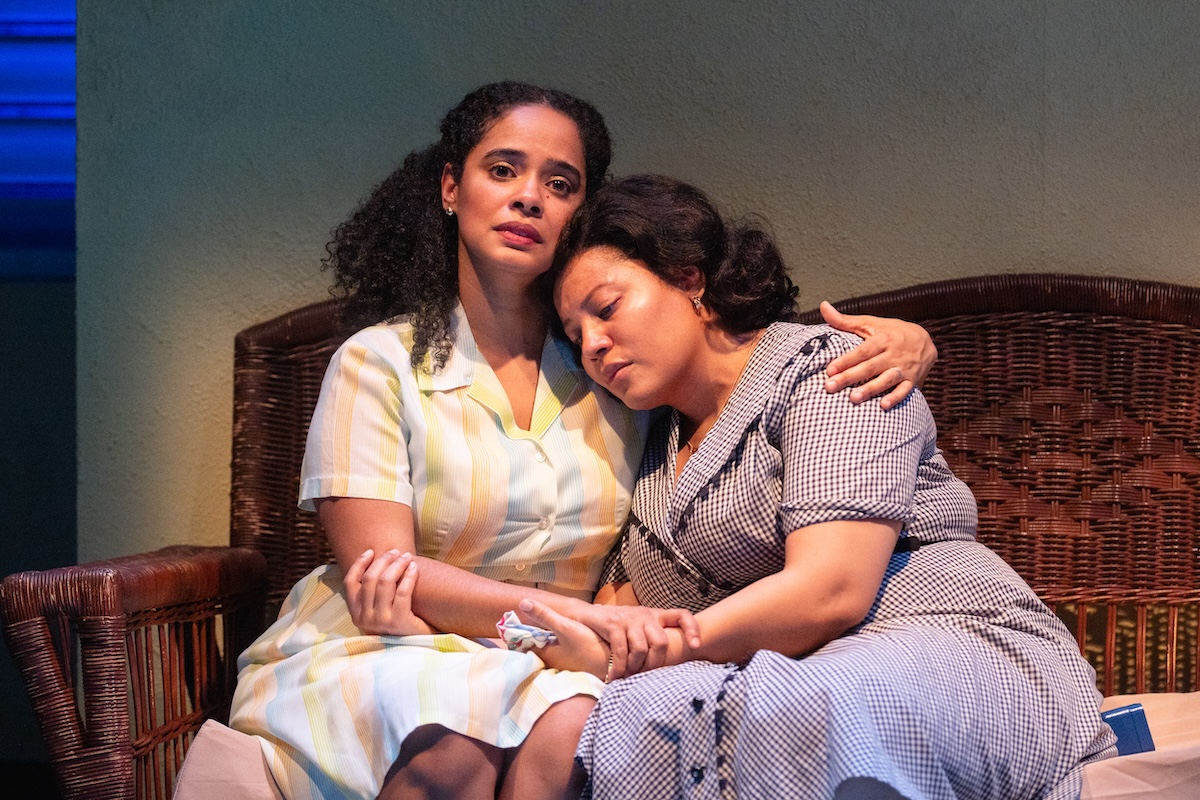More

(Photo © Carol Rosegg)
Yeardley Smith sounds an awful lot like Lisa Simpson. This is not surprising, since the actress provides the voice of the perpetually eight-year-old Lisa for The Simpsons, the long-running animated television series. And yet, the experience of listening to Smith live and in person is rather bizarre; her natural voice is a little deeper than Lisa’s, but not much. In her engaging albeit uneven solo performance piece More, Smith talks about some of her experiences with The Simpsons but devotes the majority of the show to other aspects of her life — namely, her battles with bulimia and depression.
Smith has a dynamic stage presence and an easy rapport with the audience that immediately puts you on her side, even if it seems rather extraordinary that she’s complaining about her lack of success. To be fair, she does not deny the profound impact that voicing Lisa has had on her life and career. Yet she tells us that, when she was a child with dreams of becoming famous, she thought there would be something… more.
The show is at its best when Smith uses the marks of her professional achievements to delve into deeper, more personal dramatic territory. This is exemplified in her depiction of her struggle with bulimia. In the eighth grade, she learned the secrets of binging and purging from her best friend, Nicole. Her initial description of pushing three fingers down her throat to force up the food she has just eaten are rather harrowing, yet she somehow tackles the subject with humor and a sense of style.
Peppy musical underscoring, courtesy of sound designer David Meschter, accompanies a very detailed account of the process of binging and purging. Smith is all smiles, whispering conspiratorially as she lets the audience in on a few trade secrets such as “purging in the middle of binging increases the euphoria and also makes room for more food — thus prolonging the binge.” The performer’s manner is sexy, confident, and whimsical, which makes the subject matter even more disturbing.
Unfortunately, other parts of the show do not have quite the same impact. Rather than focusing on a few specific stories and situations, Smith tries to give an overview of her life. She talks about her early childhood theater experiences, reads notices of her breakthrough performance in a musical comedy revue at the age of 17, discusses her parents’ unhappy marriage and eventual divorce, narrates the progression of her career, and so on. The drawback to this strategy is that the evening becomes diffuse and the important people in her life are not sufficiently developed through her descriptions of them.
An amusing sequence in which Smith uses a marker and a dry erase board to literally draw a picture of her family is not quite enough to give these characters depth. Her discussion of her husband, Dan, is also rather vague. We understand that she loves him deeply but does this mean that’s he’s perfect? In the piece, he seems to function as a knight in shining armor who helps to rescue Smith from her depression and bulimic tendencies; while this may be true, it makes for an unsatisfying dramatic arc.
Director Judith Ivey has done a good job of helping Smith to keep her delivery engaging, and Beverly Emmons’s lighting is perfectly suited to capturing the different moods that Smith invokes in her performance. Loy Arcenas’s set design, on the other hand, seems rather incoherent; the large frame that dominates the stage looks like a leftover from Portraits, which played at the Union Square Theatre this past fall. A desk, an elevated unit that is possibly some kind of tree house, and a few props seem, on the whole, like a random collection of objects that have no relation to each other.
Inadvertently, the set points up the fact that the show is not quite complete. While there’s a lot of potential in More — some of which is successfully realized — the piece needs to undergo another round of rewrites in order for it to have the impact of similarly autobiographical performance pieces by artists such as Margaret Cho, John Leguizamo, and Elaine Stritch, all of whom transformed intimate, personal material into riveting drama. Smith only manages to do this occasionally. On the whole, the show feels more like a therapeutic breakthrough for the writer-performer than compelling theater for a paying audience.











